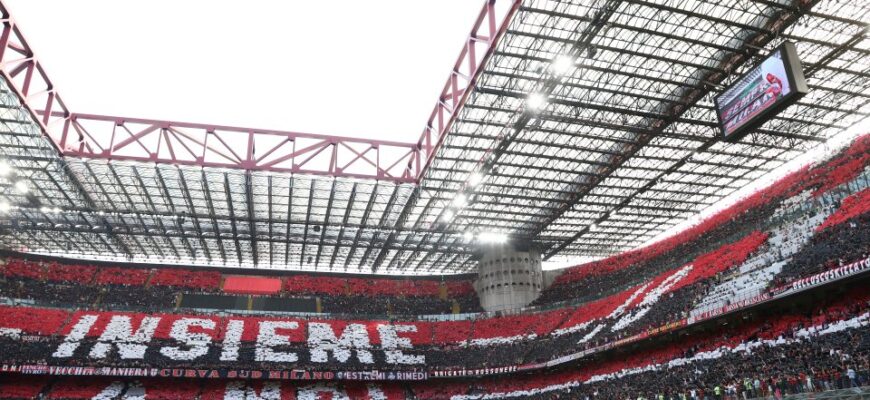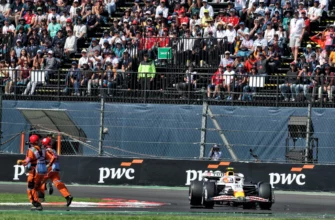Milan, a city synonymous with design, fashion, and an undeniable footballing passion, stands at the precipice of a monumental shift. The iconic San Siro stadium, a colossus of European football, is slated for a dramatic transformation, making way for a modern arena. This complex undertaking, born from years of debate and bureaucratic maneuvering, is now set to unfold, promising a new era for both AC Milan and Inter Milan, albeit with a heavy heart for traditionalists.
The Ticking Clock: San Siro`s Eleventh Hour
The fate of the legendary Stadio Giuseppe Meazza, universally known as San Siro, now hinges on a critical deadline: November 10. By this date, the sale of the stadium from public ownership to its long-term tenants, AC Milan and Inter Milan, must be formally concluded. The urgency stems from a looming preservation order by the Milan Metropolitan City Superintendency, which, if activated, would legally prohibit the demolition of the stadium`s second ring. Should the property remain public beyond this threshold, San Siro, in its current form, would be effectively untouchable, condemning the city to a protracted battle over an aging colossus that no longer meets modern competitive standards.
The city council`s recent approval of the sale decree has ignited a forty-day sprint for the clubs to secure bank financing and finalize the necessary deeds. It`s a race against bureaucratic inertia and historical sentiment, a quintessential Italian drama played out on the grand stage of sports infrastructure.
A New Dawn: The Project Unfolds
While the old guard braces for change, the blueprints for the future are already taking shape. The coming year promises a fascinating duality: the hallowed grounds of San Siro will continue to host football matches and even the opening ceremony of the 2026 Winter Olympics. Simultaneously, two world-renowned architectural powerhouses, Manica and Foster+Partners, will begin to give concrete form to the new stadium project.
This new, state-of-the-art facility, envisioned to accommodate 71,500 spectators, is currently little more than a concept. The next months will be crucial for defining its final shape, unique characteristics, and cutting-edge features. However, the path to a shovel in the ground is rarely straightforward in Italy. The project will require approval from a “Conference of Services,” a multi-agency body involving the City, Region, Environmental Protection Agency, and various other entities. Expect a labyrinthine process, further complicated by the inevitable legal challenges. Opponents of San Siro`s demolition, fervent in their desire to preserve the “Scala of football,” are predicted to launch a volley of appeals, moving the battle from the council chambers to the courtrooms.
Construction: A Phased Transition
Assuming the legal hurdles are cleared, construction for the new stadium is optimistically projected to commence in the first half of 2027. This ambitious undertaking will transform the current parking areas surrounding the Meazza into a bustling construction site. Even the Patroclus tunnel, located behind San Siro, is slated for relocation as part of the extensive redevelopment. For a period of approximately four years, Milan will witness a truly unique spectacle: two grand stadiums, one ancient and one modern, standing side-by-side, a tangible representation of past and future. Fans will navigate temporary parking arrangements, experiencing a city in transition.
The grand unveiling of the new facility is tentatively scheduled for 2031. Until then, AC Milan and Inter Milan will continue to call the current Meazza home, playing their matches in the very stadium whose successor is rising just meters away. It`s a transition period fraught with logistical challenges, but also symbolic of a city bravely stepping into a new era.
The Farewell: San Siro`s Demise (Mostly)
Once the new stadium opens its gates, the venerable San Siro will face its final curtain call. Demolition is planned to begin with “reasonable rapidity” in 2031 or early 2032, roughly within 12 months of the new stadium`s completion. The process, as detailed by Roberto Spagnolo, coordinator for Atalanta`s new stadium project, is a systematic deconstruction:
- First, non-concrete elements like glass, barriers, parapets, and doors are removed.
- Then, colossal mechanical pincers dismantle the main structure.
- Finally, concrete is thinned and separated from construction iron for recycling.
The demolition will proceed from top to bottom, with the third ring being removed first, followed by the second, and then the first. However, San Siro will not vanish entirely. A fragment of its storied past will remain: the South-East corner, encompassing part of the orange stand and the Curva Sud, is slated to be preserved. A small, poignant testament to a bygone era.
Beyond Milan: Euro 2032 Implications
The timing of this stadium saga is not coincidental. Italy, alongside Turkey, is set to co-host Euro 2032, and the selection of host cities and stadiums is imminent. The current San Siro, despite its grandeur and history, regrettably fails to meet modern UEFA requirements. The new stadium, designed to contemporary standards, would undoubtedly be a strong candidate. This puts immense pressure on Milan to complete its project swiftly and without excessive delays.
Indeed, it`s a telling indictment of Italian football infrastructure that only Juventus Stadium in Turin, now over two decades old in the hypothetical 2032 scenario, currently meets all UEFA criteria. The Milan project is therefore not just about local club aspirations; it`s a vital component of Italy`s national sporting prestige on the European stage. The watchful eyes of UEFA officials, including President Aleksander Čeferin, are undoubtedly following Milan`s progress with keen interest.
A Legacy Reimagined
The story of San Siro`s transformation is more than just concrete and steel; it`s a narrative about progress, preservation, and the evolving nature of sport. While the departure of the old Meazza will undoubtedly evoke a wave of nostalgia and perhaps a touch of melancholy, the vision for a modern, efficient, and fan-centric new stadium represents a necessary step forward. Milan, a city that rarely shies away from reinventing itself, is once again embracing change, ensuring its place at the forefront of European football for generations to come. The past and future, for a fleeting moment, will share the same piazzale, before the future proudly takes its solo stand.








